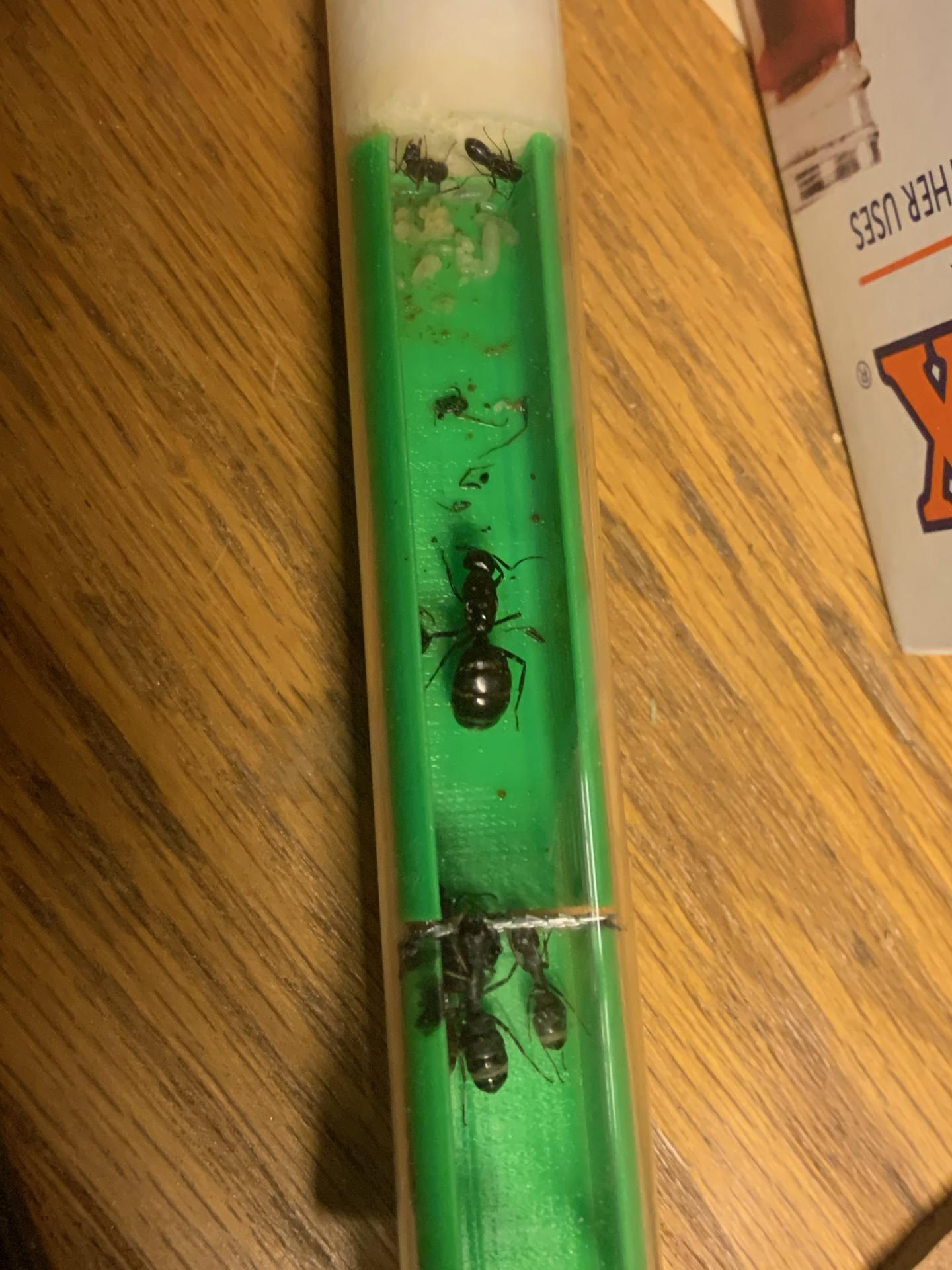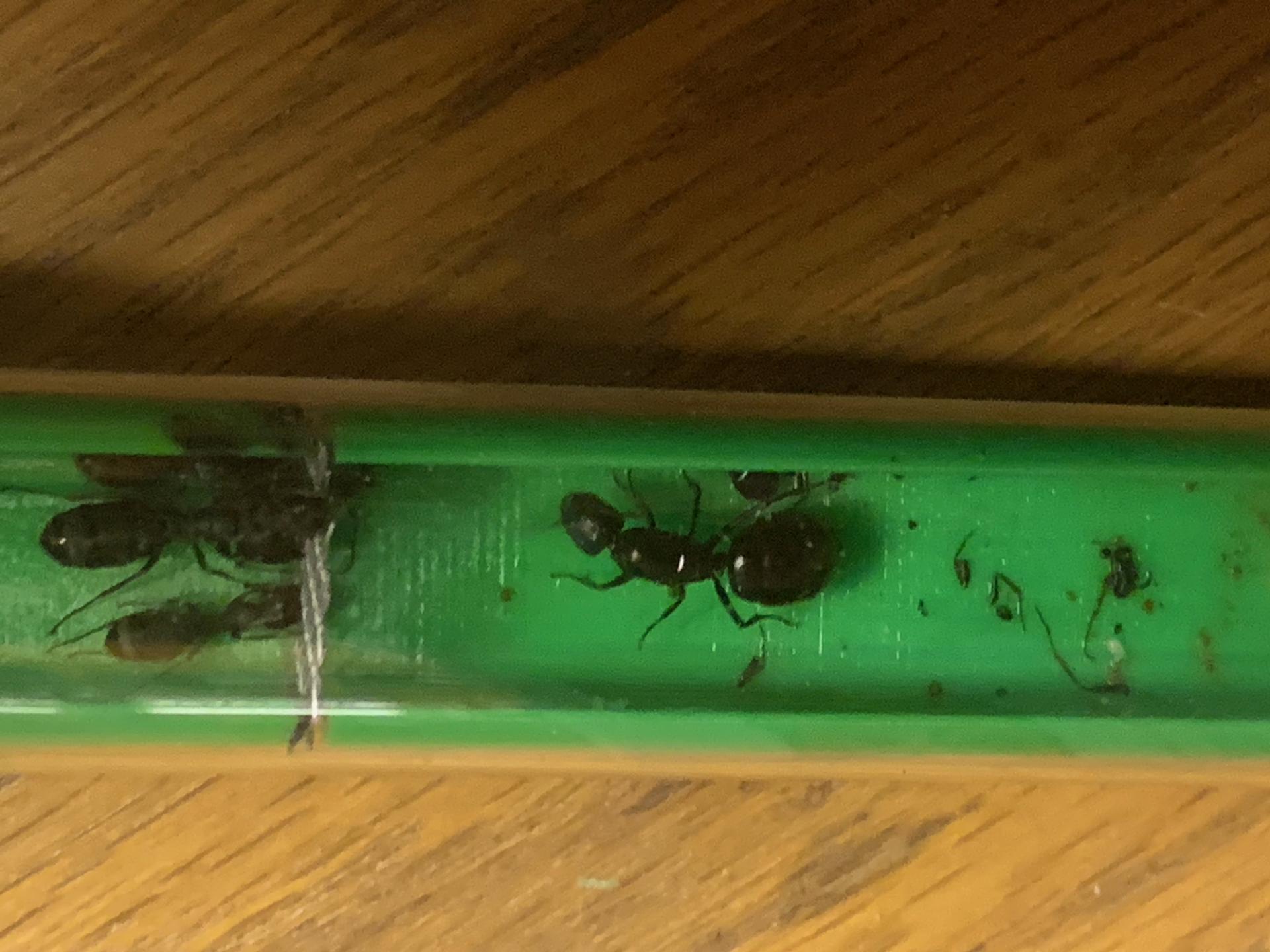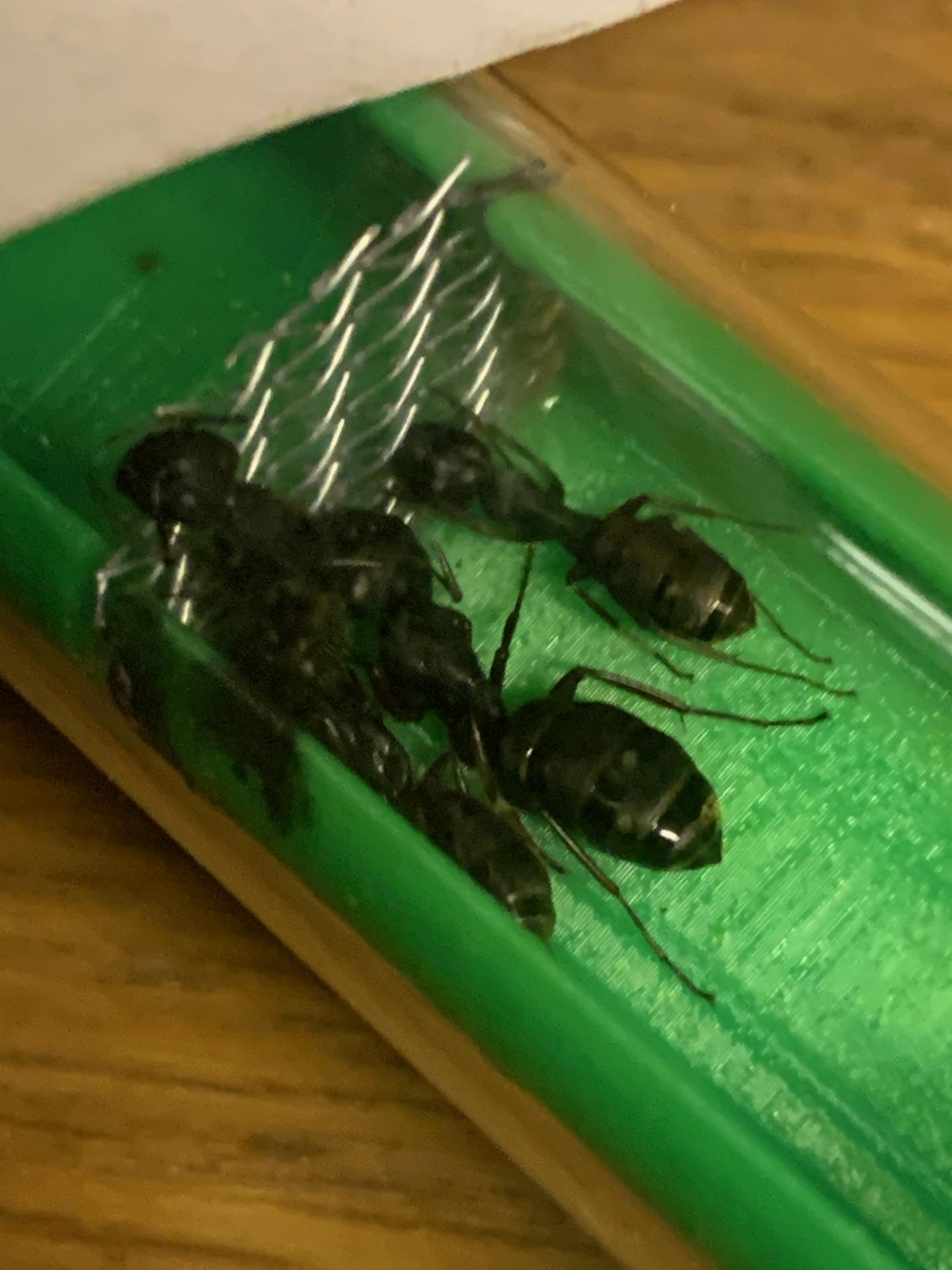When I do introductions, I stick around and watch them for hours, as there’s no telling what the ants might do. If the queen is getting injured, I am in a position to rescue her (I also make sure the setup is one I can open up, too).Well bad news.
I tried chilling the queen and the colony and then introducing them. At first it seemed like it had worked, there was no obvious fighting going on. Came back a few hours later though, only to find the queen'd been chopped into bits. I'm going to try nurb's method, hopefully it'll work, cause I really don't want this colony to just dwindle away. I caught this second queen without wings a few days ago, and she's been fed some honey water. I'll try and offer some to the colony as well. I have no definite proof that she's fertile (besides the lack of wings) but at this point I really don't have any alternatives.
If I still see signs of aggression after a week or two of the test tube being connected up to the nest, I'll probably call of the whole experiment. Don't wanna lose another queen, even if it means the colony dwindles away. Better a live queen and a big colony in a couple year's time than a dead queen and a big colony now that's still dwindling away.
- Formiculture.com
- Forums
- Gallery
- Members
- Member Map
- Chat


























